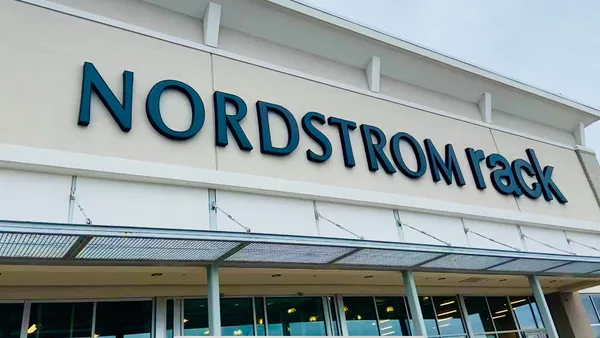Dive Brief:
-
In the aggregate, retail brands worldwide rose 35% in brand value, more than double its 14% rise a year ago, according to the BrandZ Retail report from Kantar and WPP.
-
The top five retailers globally — Amazon, Alibaba, The Home Depot, Walmart and JD.com — drove much of the category's gain, with Amazon up 49%, Alibaba up 92% and JD up 94%, according to the report.
-
Retailers with strong online and offline operations dominated, and e-commerce leaders "did even better," according to the report. Rounding out the top 20 on the BrandZ list of top retailers are, in order: Costco, Ikea, Ebay, Aldi, Lowe's, 7-eleven, Tesco, Walgreens, CVS, Lidl, Target, Whole Foods, Woolworths, Carrefour and Falabella.
Dive Insight:
Brands in all categories were met with continued disruption over the past year, but retail was the "bellwether," according to this report.
"Having been battered and thoroughly transformed by e-commerce, retail led category value growth for the second consecutive year, with a rise of 35%," the authors say. "Two Chinese e-commerce giants [JD and Alibaba] drove the retail surge. … These two Chinese brands also led the Top 20 Risers, the list of brands that increased most in value year-to-year, followed by another Chinese brand, Moutai."
And while "disruption" is a term most often applied to upstart brands throwing up shoots in Silicon Valley and other tech hubs, giant retail brands — even beyond Amazon — are highly capable of disruption. "Disruption myths favor the startup hero story," according to the report. "But reality is more complicated, and big brands can be disruptors."
But shoppers can as well. Indeed, as consumers increasingly own and control their data, they will also increasingly switch their loyalty among brands with speed and ease, the authors warned. This jibes with another report from brand strategy firm Gartner L2, emailed to Retail Dive, which found that digital has "unraveled the traditional brand equity equation."
The heightened level of product research consumers can conduct through digital channels makes it more difficult for brands to extract a premium based on their name alone," according to that report, which also noted that, with 70% of consumers unable to tie brand loyalty to a reason to pay more, being a "top brand" no longer suggests an ability to fetch top prices. The percentage of affluent consumers who can name their favorite brand has also fallen "significantly"and that affects various brands at various price points.
But there are ways to lock in loyalty. "Although consumers are becoming less emotionally tied to brands, they increasingly display transactional loyalty, which is dependent on ever-changing factors including price, positioning, and ease of shopping," Gartner L2 found.














